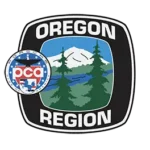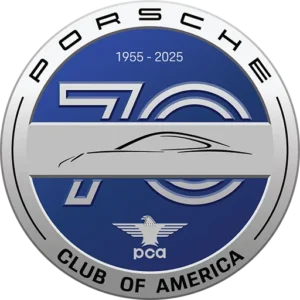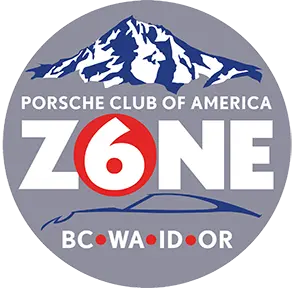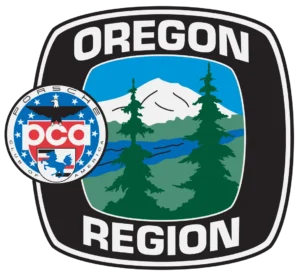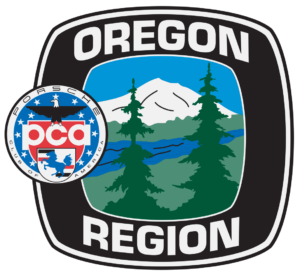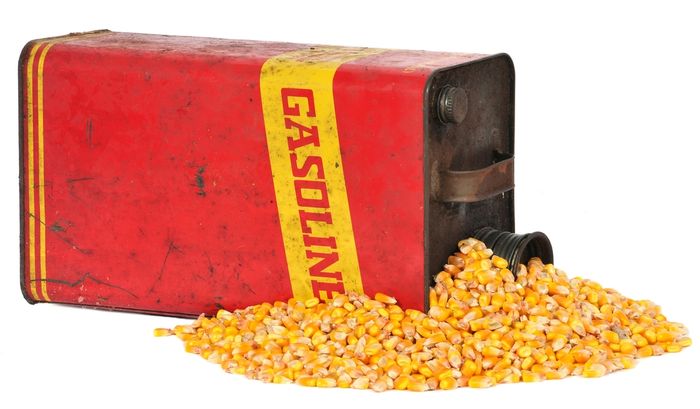
A few vintage aircooled clients asked me what I thought about them filling their fuel tanks full of ethanol fuel (E10) before they put their cars away for winter hibernation. Another tech article is born!
As you might know, it’s challenging to find anything other than ethanol-laden fuel at the gas pump anymore. Most gas stations in Oregon, and across America, are selling E10 (10% ethanol, 90% “pure gas”), some might be selling E15 (15% ethanol, 85% “pure gas”). This is due to regulations from the federal government stating that the United States needs to ramp up to 36 billion gallons of alternative fuel use by 2022. Compare that to the U.S. having only used 11 billion gallons in 2010! So, we’re only going to see a lot more ethanol fuel.
Well what’s wrong with ethanol fuel, especially if the U.S. government is pushing it? Without getting into the politics of the fuel(oil/gas) and farming lobbies, ethanol fuel can wreak havoc with the components on/in classic and vintage vehicles (vehicles older than ~1986). More modern vehicles were produced with components which are much more ethanol-tolerant. Here are some ethanol fuel pros and cons thanks to Hemmings.com;
Pros of ethanol-supplemented fuel:
- Ethanol is clean-burning and is a higher-octane fuel than conventional gas.
- Ethanol is produced from renewable sources.
- Ethanol-powered vehicles produce lower carbon monoxide and carbon dioxide emissions, and lower levels of hydrocarbon and nitrogen oxide emissions.
- Ethanol production keeps American farmers in business and creates new farming and ethanol-processing jobs.
- Because ethanol is produced domestically, it reduces U.S. dependence on foreign oil and increases the nation’s energy independence.
- Ethanol needs fewer fossil (coal) and petroleum (gas) fuels to produce more BTU of energy than gasoline (although it does require much more water).
Cons of ethanol-supplemented fuel:
- Ethanol creates 34 percent less energy than unadulterated gasoline per gallon. This equals a loss in fuel economy of up to 3 miles per gallon for E10 fuels. In terms of heat, ethanol produces 76,330 BTU per gallon, whereas diesel fuel produces 128,450 BTU per gallon, gasoline 116,090 BTU per gallon and LP gas 84,950 BTU per gallon. The fuel economy gets even worse with E85, a loss of 7 to 8 miles per gallon with its higher ethanol content. Consumer Reports, testing in 2006, verified a loss in fuel economy of up to 30 percent in a Chevy Tahoe designed to run on flex fuel when it was tested with both unleaded gas and E85. Poor fuel economy can also be attributed to improper fuel system calibration based on computer feedback from oxygen sensors because of the temperatures needed to burn ethanol.
- Virtually any grain considered feedstock can be used to make ethanol, but some grains are better for producing ethanol than others. Corn happens to be one of the worst grains for making ethanol but we produce so much more of it than any other grain that it was the ingredient of choice for U.S. ethanol producers. In South America, ethanol is produced from sugar cane, which is easier to refine and gives a higher yield per acre than corn (1,200 gallons per acre vs. 300 gallons per acre of corn). The U.S. government did impose a 55 cents per gallon tariff to prevent the import of sugar cane-based ethanol into the United States, though that tariff has recently expired).
- Ethanol is hygroscopic, which means it absorbs water more easily than gasoline. That leads to water condensation inside fuel tanks, carburetor fuel bowls and fuel lines where air spaces are present. Water content in fuel will also swell up the paper filter media inside fuel filters not specifically designed for flex fuels and can thus restrict fuel flow at the filter.
- Ethanol also erodes fiberglass tanks, rubber hoses and plastic fuel lines. It contributes to rust in fuel systems by creating condensation in the unfilled portion of gas tanks. It will also dissolve varnish and rust in steel fuel components. These dissolved ingredients sit in the bottom of gas tanks until they are removed or they will enter the fuel system if the fuel level in the tank gets too low.
So, what are some steps you can take to diminish the damage from ethanol use in your classic/vintage Porsche? The easiest one is to fill only with 100% pure gas, gas without any ethanol in it. 100% pure gas will be considerably more expensive than the 91/92 octane (Premium/Supreme) E10 found at most gas stations, but if you don’t put many miles on your vintage Porsche each year, the annual cost for pure gas might be a minimal increase. Here is a listing of most of the gas stations in Oregon selling 100% pure gas; https://www.pure-gas.org/index.jsp?stateprov=OR
Hemmings.com also has some recommendations for upgrades you can make to your classic/vintage vehicle. Many come from OEM marine manufacturers who’ve been dealing with ethanol-related fuel issues for awhile now:
- Replace any plastic or rubber fuel lines with ethanol-resistant hose or nylon tubing.
- Install a water separator filter in the fuel line leading to the carburetor. Water collects in the filter and can be removed periodically.
- Replace any fiberglass tanks with steel or aluminum.
- Ensure that any O-rings in the fuel system are also ethanol-compatible.
- Keep your tank as full as possible to prevent air space where condensation can form.
- Use specific ethanol-compatible fuel storage additives. These are normally blue in color. Regular fuel stabilizers will not work unless they are labeled ethanol fuel-compatible.
- Shop around for a marina or service station that does not pump E10 or E85. None of these stations will be affiliated with a major gasoline producer, but there are still some out there, especially in areas around lakes and rivers where boating is popular. You can find a “pure gas” map of many of these stations online at the Historic Vehicle Association website
- Vent your fuel system during storage for extended periods; the moisture your fuel system might absorb from the outside will be less than the moisture created in the air space inside.
- Use a fogging solution in your carburetor during storage to prevent condensation from collecting in fuel bowls.
- Use of isopropyl alcohol-based dry gas will help to absorb system moisture. Regular dry gas is ethanol-based and will only make the problem worse. Isopropyl-based additives actually combine with the water molecules and removing moisture through the combustion chamber.
- Use of a flex fuel-compatible fuel filter where possible will prevent degradation of the paper media in your filter by water in the fuel system.
For those of you with more modern vehicles (~1986+), your vehicle is better prepared to deal with the component effects of ethanol. That being said, still be aware of the MPG losses and hygroscopicity from ethanol fuel, so that you can maximize your investment.
Whichever direction you decide to go regarding ethanol-laden gas or 100% pure gas, just make sure to get out and enjoy your Porsche!Please feel welcome to post here with any questions.
Jeremy Williams is the Oregon PCA Technical editor. He co-owns Matrix Integrated Inc. (Matrix Integrated Inc.) with his brother Justin. Jeremy can be reached at [email protected]


